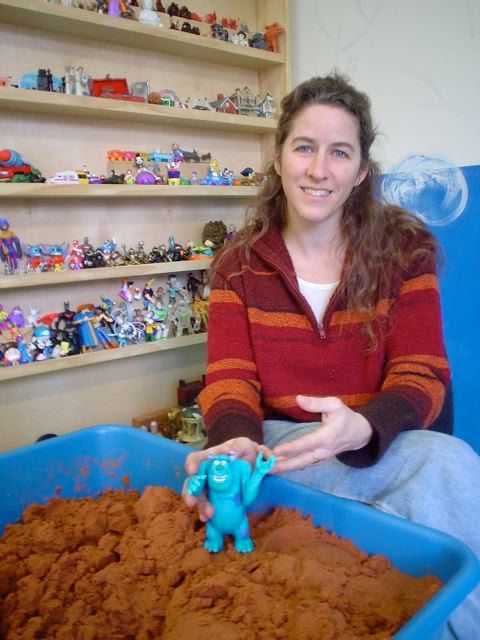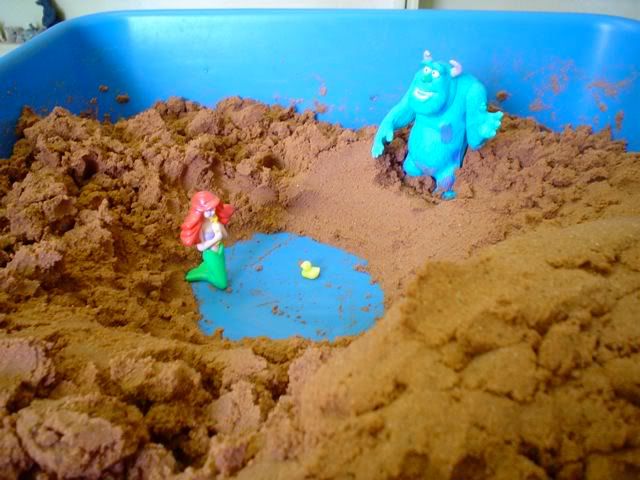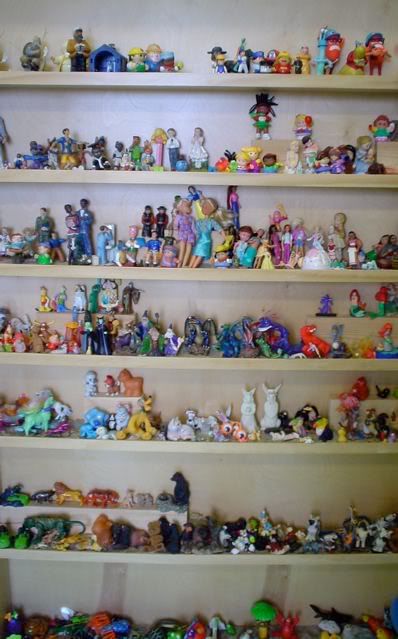
This is Linda and she is a self employed Art Therapist in Louisville, KY. Linda moved to Louisville from Savannah, GA in 1994 to attend the Masters in Expressive Art Therapy Program at the University of Louisville. "Expressive" meaning that it incorporates drama, music, and play therapy in addition to art. At the moment she works mostly with children. She says working with adults can be pretty intense because they are verbal, with defense mechanisms and have been programmed by society to be a certain way. Linda helps adults move past these defenses to a place where they can freely process their situation. She often uses a form of art and play therapy called sand tray therapy. In her office you will find three sand tray tables and two tall shelves she custom built full of hundreds of miniatures and figurines. The shelves are categorized accordingly: Animals and bugs, armies and teams, children, couples, houses, household objects, magical things, mothers and women, men, plants and trees, religious figures, sea creatures, shells, symbols of other cultures and superheroes. Linda has been collecting miniatures for ten years to use in play therapy and for shadowboxes that she makes as an assemblage artist.
To start a session she might ask her clients to build their world by selecting miniatures and playing in the sand. Linda says that people are open to art therapy because it applies primitive language using all senses in addition to the usually verbal approach. An individual can play out a situation rather than just speak about it. Play time during therapy is separate from the individual. Using Sully, a Disney character she explains, “We are talking about Sully, we are not talking about you, that frees Sully up to do whatever he wants to do (in the sand tray). He can smack her (referring to the Little Mermaid in her other hand) and bury her underneath the sand and there are no consequences. Instead you have had the ability to release that aggression". Art, drama and play are all language. She says looking into these visual areas taps into the subconscious through a different part of the brain.
Linda also has a long history of working with autistic children. She has a comfort level because she herself has sensory issues. “If you get out of a car, you leave the key in the car and you leave the door open and that bell is dinging, I am going out of my mind to get the key out of the car so that it stops because I can’t focus on anything else. An autistic kid would do the same thing but it may not be as obvious. It may be a tag in their shirt that is driving them crazy. I have an understanding and compassion for where they are coming from, of course there sensory issues go a whole lot deeper than mine."
Linda recently married to Rusty a fellow artist she met in Savannah. Their home, also their studio space, has art work hanging on every wall. She considers her practice a mixture of spiritual and scientific. As a therapist she believes you need to know your issues so you can keep them separate from the clients. "No one is perfect and there is never going to be a therapist without his or her own issues." Linda says that her best asset in life is that she is very flexible. She tries not to get too attached to one idea of what she thinks reality is because she is aware that it can constantly shift.
Linda would like to know your interpretation of what is happening in the scene of the sand tray below.


No comments:
Post a Comment